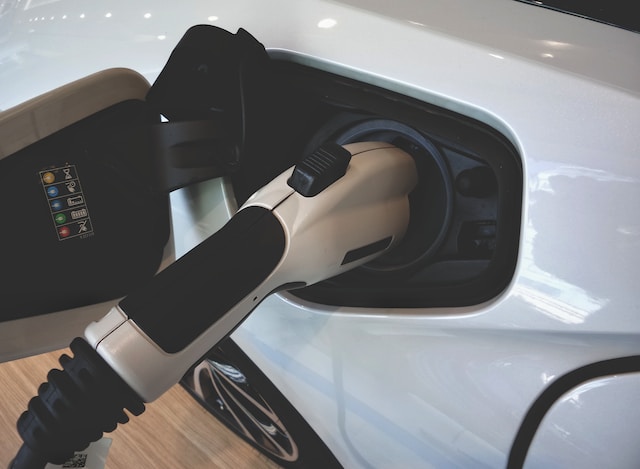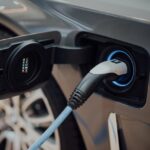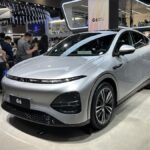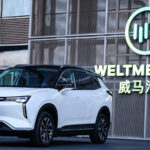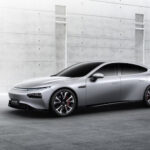China’s Electric Vehicle Batteries: An Analysis of 2023 from January to June
As one of the core components, electric vehicle (EV) batteries are often referred to as the “heart” of electric vehicles, surpassing the significance of the engine in traditional fuel-powered cars. Throughout the development of automotive electrification, innovation in EV battery technology has played a pivotal role in driving progress and has become a crucial factor in restructuring the automotive value chain. China, leveraging the momentum of new energy vehicle development, is gradually gaining dominance and influence in this trillion-dollar industry.
Recently, the China Electric Vehicle Battery Industry Innovation Alliance (referred to as the “Battery Alliance”) released the latest monthly data on EV batteries. The specific data is as follows:
- Production: From January to June of 2023, China’s cumulative EV battery production reached 293.6GWh, with a year-on-year increase of 36.8%.
- Sales: From January to June of 2023, China’s cumulative EV battery sales reached 256.5GWh, with a year-on-year increase of 17.5%.
- Installed Capacity: From January to June of 2023, China’s cumulative EV battery installed capacity reached 152.1GWh, with a year-on-year increase of 38.1%.
Moreover, the number of domestic EV battery enterprises supporting electric vehicles has increased. Compared to the previous five months, new companies like Linkage Tianyi, Tianyi Energy, Huzhou Weilan Technology, Xingying Technology, and Zhejiang Guanyu have emerged in the market.
In terms of market share, CATL (Contemporary Amperex Technology Co. Limited) continues to maintain its leading position with a 43.4% market share in the first half of the year, with a cumulative installed capacity of 66.03 GWh. BYD (Build Your Dreams) follows closely with a 29.85% market share and an installed capacity of 45.41 GWh. CALB (China Aviation Lithium Battery), EVE Energy, and Guoxuan High-Tech rank third, fourth, and fifth, with market shares of 8.26%, 4.35%, and 3.98%, respectively.
In the first half of 2023, the market pattern of EV batteries in China is becoming clearer. In the domestic market, the previous “one dominant, multiple strong” situation maintained by CATL has gradually evolved into a “1+1+N” competition dominated jointly by CATL and BYD.
Lithium-ion batteries remain the mainstream choice for electric vehicles, with the most prominent contenders being ternary lithium batteries and lithium iron phosphate batteries. Before 2017, the market predominantly favored lithium iron phosphate batteries for small and micro EVs due to their lower cost, higher safety, and longer cycle life. However, with advancements in ternary lithium battery technology and policies encouraging higher energy density, ternary lithium batteries gradually became the industry standard by 2017.
But with the withdrawal of subsidies for ternary lithium batteries and increased cost control in the new energy vehicle sector, lithium iron phosphate batteries have seen a resurgence since 2021, reaching a market share of 51% for the full year, further expanding to 55.6% in 2022.
As of the first half of 2023, China’s cumulative installed capacity for EV batteries reached 152.1GWh, with ternary batteries accounting for 48.0GWh (31.5% of the total, with a year-on-year increase of 5.2%), and lithium iron phosphate batteries reaching 103.9GWh (68.3% of the total, with a year-on-year increase of 61.5%).
In comparison to ternary batteries, lithium iron phosphate batteries have an advantage in safety and cost as they do not require expensive resources like nickel and cobalt. With innovations such as CATL’s CTP (cell-to-pack) technology and BYD’s blade battery, the shortcomings of lower energy density in lithium iron phosphate batteries have been compensated, making them more favored by several new energy vehicle companies.
BYD has emerged as a major player in the revival of lithium iron phosphate batteries. In the first half of 2023, BYD’s performance has been remarkable. Its EV battery installed capacity was 45.41GWh, securing the second position in the industry. Its market share increased from 21.59% in the same period last year to 29.85%, narrowing the gap with CATL.
While CATL remains the industry leader with an installed capacity of 66.03GWh, its market share has slipped to 43.4%, losing 4.27% compared to the same period last year. CATL’s installed capacity for ternary lithium batteries is 29.59GWh, accounting for 34.21% of the total installed capacity, but it still holds a dominating share of 61.65% in the domestic ternary lithium battery market.
In the field of lithium iron phosphate batteries, CATL’s installed capacity for the first half of the year was 36.44GWh, accounting for 35.06% of the domestic total. While it was surpassed by BYD in some months last year, BYD has maintained a steady market share of 43.68% in the first half of 2023, firmly retaining its “throne” in the lithium iron phosphate battery segment.
The concept of a “self-supply mode” is perhaps the most enviable core advantage of BYD in its pursuit of CATL. Currently, besides BYD, other battery manufacturers still heavily rely on orders from vehicle manufacturers. BYD’s ability to implement large-scale “self-production and self-use” for its own vehicle models sets it apart.
Apart from the rivalry between BYD and CATL in the lithium iron phosphate battery segment, CATL is facing competition from other leading battery suppliers for its clients. For instance, GAC Aion, one of the top two brands in terms of new energy vehicle sales, shifted its battery supplier from CATL to CALB due to cost reasons.
Battery suppliers in the second tier, including CALB, EVE Energy, and Sunwoda, have seen their market share grow compared to the same period last year, owing to their cost-effectiveness. CALB’s battery installed capacity increased from 7.58% in the first half of last year to 8.26%. EVE Energy, with an installed capacity of 6.61GWh, climbed to the fourth position in the EV battery industry, with a market share of 4.35%. Sunwoda also rose by two percentage points to 2.46%.
Among the top ten enterprises, Guoxuan High-Tech, LG, and SVOLT experienced a decrease in market share. LG’s market share in China, except for Tesla, has been steadily declining in recent years. Guoxuan High-Tech, despite being backed by Volkswagen, has not been able to penetrate Volkswagen’s main supply system in China due to its technical route. SVOLT’s slow growth in the first half of the year was due to poor sales of its parent company, Great Wall Motors’ electric vehicles.
According to data from the Battery Alliance, 48 EV battery enterprises in China achieved a cumulative installed capacity of 148.4GWh, accounting for 97.5% of the total installed capacity, while the remaining 38 companies shared only 2.5% of the market, indicating a high concentration in the market. Last year and the year before, the top ten enterprises held market shares of 94.7% and 92%, respectively.
In recent months, Chinese EV battery manufacturers have actively pursued international markets. CATL, for instance, announced a partnership with Ford to build a battery plant in the United States, with a planned investment of $3.5 billion by 2026. Similarly, Guoxuan High-Tech’s subsidiary, Hefei Guoxuan, signed a memorandum of understanding with European battery manufacturer InoBat to jointly establish a 40GWh capacity EV battery factory in Europe. Other companies like Farasis Energy and SVOLT have also made investments in overseas battery factories.
According to SNE Research, a Korean research institution, CATL and BYD continued to hold the top two positions in the global EV battery industry, with market shares of 26.3% and 16.1%, respectively, for the period from January to May 2023. Notably, the market share of Chinese companies (CATL, BYD, CALB, Guoxuan High-Tech, EVE Energy, and Sunwoda) increased from 56.1% in the same period last year to 62.7%, while Korean companies (LG, SK ON, and Samsung) saw their market share decrease to 23.3%.
Beyond the top six, the competition is fierce among ZENERGY, SVOLT, LG New Energy, Farasis Energy, and Rept Battero. ZENERGY, in particular, has secured partnerships with major automakers such as SAIC Motor and SAIC-GM.
In conclusion, China’s electric vehicle battery industry is witnessing rapid growth, with CATL and BYD leading the charge in the competition. CATL still holds its dominance in the ternary lithium battery segment, while BYD has successfully maintained its “throne” in the lithium iron phosphate battery sector. However, the market landscape is evolving rapidly, with emerging players and increased focus on international markets. As the Chinese EV battery industry continues to expand, it remains crucial for manufacturers to innovate and adapt to changing market dynamics to maintain their positions in the highly competitive landscape.
Photo by Possessed Photography on Unsplash
